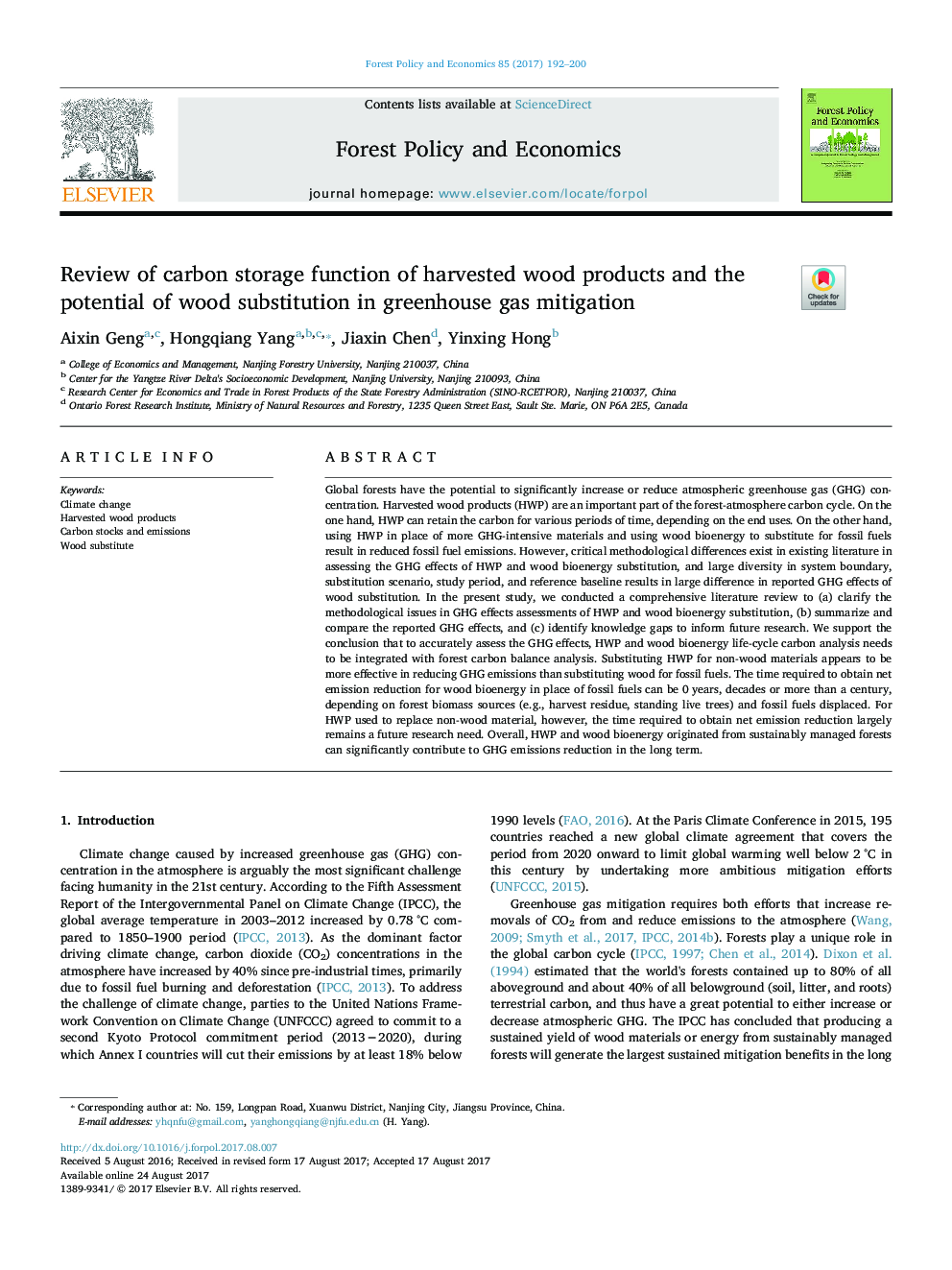| کد مقاله | کد نشریه | سال انتشار | مقاله انگلیسی | نسخه تمام متن |
|---|---|---|---|---|
| 6544848 | 1421654 | 2017 | 9 صفحه PDF | دانلود رایگان |
عنوان انگلیسی مقاله ISI
Review of carbon storage function of harvested wood products and the potential of wood substitution in greenhouse gas mitigation
ترجمه فارسی عنوان
بررسی عملکرد ذخایر کربن محصولات چوب برداشت شده و امکان جایگزینی چوب در کاهش گازهای گلخانه ای
دانلود مقاله + سفارش ترجمه
دانلود مقاله ISI انگلیسی
رایگان برای ایرانیان
کلمات کلیدی
تغییر آب و هوا، محصولات چوب برداشت شده، ذخایر کربن و انتشار گازهای گلخانه ای، جایگزین چوب،
موضوعات مرتبط
علوم زیستی و بیوفناوری
علوم کشاورزی و بیولوژیک
جنگلداری
چکیده انگلیسی
Global forests have the potential to significantly increase or reduce atmospheric greenhouse gas (GHG) concentration. Harvested wood products (HWP) are an important part of the forest-atmosphere carbon cycle. On the one hand, HWP can retain the carbon for various periods of time, depending on the end uses. On the other hand, using HWP in place of more GHG-intensive materials and using wood bioenergy to substitute for fossil fuels result in reduced fossil fuel emissions. However, critical methodological differences exist in existing literature in assessing the GHG effects of HWP and wood bioenergy substitution, and large diversity in system boundary, substitution scenario, study period, and reference baseline results in large difference in reported GHG effects of wood substitution. In the present study, we conducted a comprehensive literature review to (a) clarify the methodological issues in GHG effects assessments of HWP and wood bioenergy substitution, (b) summarize and compare the reported GHG effects, and (c) identify knowledge gaps to inform future research. We support the conclusion that to accurately assess the GHG effects, HWP and wood bioenergy life-cycle carbon analysis needs to be integrated with forest carbon balance analysis. Substituting HWP for non-wood materials appears to be more effective in reducing GHG emissions than substituting wood for fossil fuels. The time required to obtain net emission reduction for wood bioenergy in place of fossil fuels can be 0Â years, decades or more than a century, depending on forest biomass sources (e.g., harvest residue, standing live trees) and fossil fuels displaced. For HWP used to replace non-wood material, however, the time required to obtain net emission reduction largely remains a future research need. Overall, HWP and wood bioenergy originated from sustainably managed forests can significantly contribute to GHG emissions reduction in the long term.
ناشر
Database: Elsevier - ScienceDirect (ساینس دایرکت)
Journal: Forest Policy and Economics - Volume 85, Part 1, December 2017, Pages 192-200
Journal: Forest Policy and Economics - Volume 85, Part 1, December 2017, Pages 192-200
نویسندگان
Aixin Geng, Hongqiang Yang, Jiaxin Chen, Yinxing Hong,
